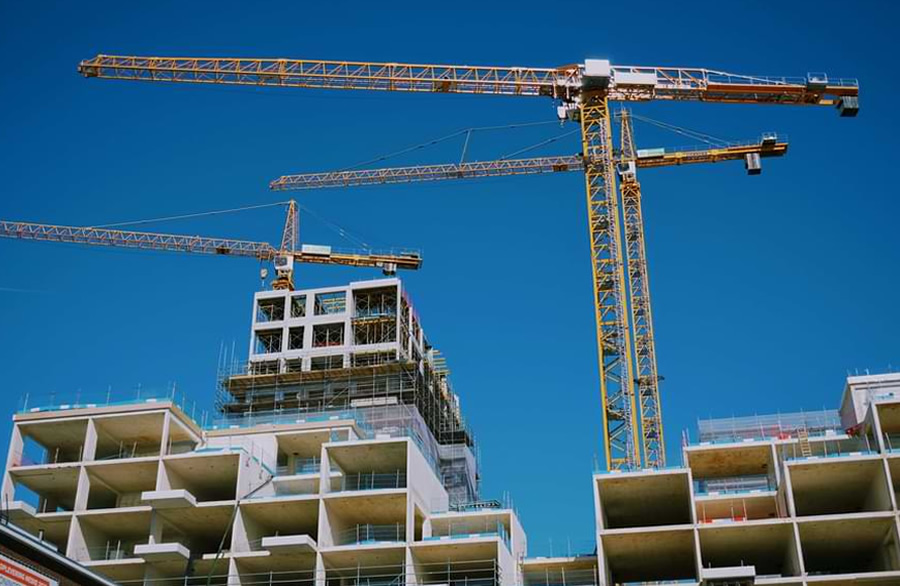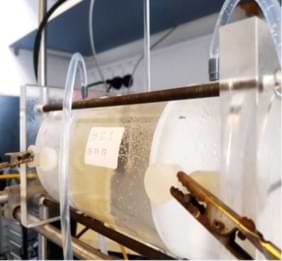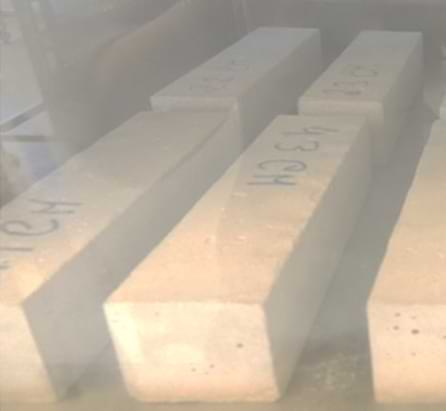
EK reactor – electrodialytic technology as a pre-treatment for wastewater reuse applications [NI-TECH-2020-05]
Improved electrodialytic technology for materials and irrigation sector application and hydrogen production for clean energy production
BACKGROUND
EK reactor is able to tune treated wastewater, to use for further materials such as concrete, avoiding contaminated concrete and decreasing the need of use polluted water and/or tap water.
The EK reactor is aligned with the most recent trends of the European Economic Area and the United Nations Environment Programme, that call for action to increase water-use efficiency in all sectors.
Indeed, every continent is now affected by freshwater scarcity, being classified as the highest global risk regarding potential effects for the next decade by the World Economic Forum (2015). Climate change, rapidly growing populations and increased urbanization are the main reasons responsible for this trend. Today, an estimated 3.6 billion people – nearly half the global population – already live in areas that are potentially water scarce at least one month per year. According to the United Nations, this number could increase to 4.8 to 5.7 billion by 2050, as two out of every three people are likely to be living in cities or other urban centres. In this context, it is important to mention that the vast majority of valuable fresh water is used for non-drinking purposes all around the world. Water use for the concrete industry represents 9% of all industry withdrawals and 1.7% of all global water consumption. The two most consumed materials in the world are concrete, after water. In a concrete mix, the water-cement ratio is around 0.45 to 0.60. In other words, more than 17 Billion m3 of freshwater are used in the production of concrete per year.
Today, freshwater is the only type of water that fulfils the industry standards, for quality and safety reasons. In fact, if polluted water were used, the quality of the concrete would be significantly lower, leading to a structural failure that would represent 5% to 9.4% of the total costs in concrete production. However, based on the aforementioned reasons, tap water supply is highly limited in dry regions such as Middle East and Africa. For this reason, construction companies often have no other option than to rely on water that is at least partially polluted.
TECHNOLOGY OVERVIEW
The present re-designed reactor, EK reactor (Figure 1), proposes to reduce the freshwater consumption on concrete production, for instance, replacing 100% of the water that is used by treated wastewater. NOVA’s technology consists of a suitable electrodialytic extraction reactor for a wide variety of contaminants (such as heavy metals, salts, organic contaminants) and self-produce clean hydrogen.

NOVA’s EK reactor provides control of the pH in different stages of the treatment, depending on the final application target. Thus, in the first stage, the pH will decrease as the aqueous matrices gets acidified. After a few hours of treatment, in a second stage, the pH turns into alkaline conditions, reaching suitable conditions for example for the final matrices to be used in concrete (Figure 2). The findings will increase the possibility of having a high-quality aqueous resource for different purposes. Thus, it is possible to remove from wastewater the positively and negative charged compounds, assessing also differences in the pH (promoted by the influence of electrodes that are directly in contact with the sample to be treated – water electrolysis). This water electrolysis will promote the oxidation of the organic contaminants, promoting as well as the electro-degradation. An optimal combination is achieved:
- Acid media – break complexes between elements (e.g. removal of Ca2+, Zn2+);
- Alkaline media – removing e.g. salts (Cl-), electrodes in contact with the contaminated matrices – degradation of the organic compounds.

Other important component of the reactor are the membranes: cation and anion exchange membranes. The surface will attract dissolved ions with the opposite charge (counter-ions) from the pore water of the membranes. Counter-ions will be transported through the membrane due to electrical current and co ions (with same charge as the membrane’s surface) will be rejected. The membranes allow the regulation of ion fluxes, thus selecting ions that reach the electrode compartments and will keep the contaminants separated from the sample to be treated).
The re-designed reactor:
- Is flexible on scale and do not add any chemicals during the process;
- Uses non-destructive materials;
- It can remove a large range of contaminants at the same time, meaning lower costs in the updates of the reactor;
- Depending on the effluent source, the material can change (1) in the colour (grey to light brown) or (2) texture (rough to softer).
Tests on final matrix characteristics and materials performance were studied in a bench scale reactor, thus:
Matrix final characteristics:
- Salts content: Chloride 75% removal; sulfates 72% removal, in 2h 62% of the chloride was in the central compartment;
- Triclosan and its metabolites and by-products degradation: 92% to bellow the detection limit;
- pH in the final matrix to be further use: 9-10;
- Law parameters: COD 5 93% removal; COD 52% removal.
Materials performance using 100% of electro-treated wastewater:
- Compressive tests: mortars with 7 days of age (39 MPa); mortars with 14 days of age (47 MPa); mortars with 28 days of age (51 MPa);
- Setting times: compared to the reference (made with tap water), either is the same time or is faster by 20 minutes;
- Workability: compared to the reference (made with tap water) the slump increased by 25 mm;
- pH of the material = same as the reference;
- All the materials parameters in accordance with EN 1015-3, EN-196, EN 206-1 and NBR 15900/2009.
Additionally, during the process the self-produced hydrogen had a 60% faster flow rate production when compared to the conventional three compartment reactor and presented an average purity from 70% to 90%, depending on matrix initial characteristics.
FURTHER DETAILS
Magro C, Paz-Garcia JM, Mateus EP, Ribeiro AB (2019) Sustainability of construction materials: electrodialytic technology as a tool for mortars production, Journal of Hazardous Materials, 363, pp 421-427, DOI: 10.1016/j.jhazmat.2018.10.010. (preliminary studies with a conventional reactor).
STAGE OF DEVELOPMENT
Technology Readiness Level (TRL) 4 – technology validated in lab.
Successful laboratory tests were carried for matrix final characteristics and materials performance. The removal of contaminants by the re-designed reactor: salts, heavy metals and triclosan and its metabolites, as emerging organic contaminants molecular mode, was carried out: removal/degradation rate was approximately 40 % – 99%. Regarding materials performance, was concluded that the material acquires better or similar characteristics compared to the reference material in the parameters of: compression and flexibility strength (curing time of 7, 14 and 28 days), setting time, workability, concentration of salts (chlorides and sulphates) and concentration of COD and BOD5.
BENEFITS
- Decreased wastewater volume discharge;
- Wastewater treatment plants from end-of-line waste process to resource production;
- Safer wastewater reuses;
- Regulatory industry standards compliance;
- Avoid the problem of contaminated concrete;
- Fine-Tune treated wastewater e.g. controlling pH & salts amount;
- Self-produced clean hydrogen to be used and storage;
- Accessible solutions that fit in any industrial setting;
The innovation comparing with existing solutions:
- Reconstruction of patented reactors for a specific purpose – pre-treatment of wastewater for further reuse in e.g. construction materials production;
- Avoid some of the disadvantages of the electrodialytic process;
- Taking the advantages of the continuous production of hydrogen during the process and direct electro-degradation of organic contaminants;
- Aqueous environmental matrices final characteristics similar with tap water;
- Improvement in the material manufacture final quality.
APPLICATIONS
The present application will increase the possibility of having a wastewater resource of quality, similar to the freshwater that is consumed in the production of building materials or to irrigation purposes.
OPPORTUNITY
Looking for an early adopter in the building industry in order to allow the full scaling study (joint development, licencing or investors in spin-off). After the end of the trial, its effectiveness will be evaluated and further expanded to more customers/industries.
INTELLECTUAL PROPERTY
- Patent application submitted (WO2020188370).
NOVA Inventors
Cátia Joana Costa Magro
Alexandra B. Ribeiro
Eduardo Manuel Hipólito Pires Mateus
Paula R. Guedes


